Some years back I was rowing in a race with my good friend Bill Gribbel in his tandem wherry, DONOGHUE. She was a copy of a circa-1870 pulling boat found, restored, and documented by the late Westport, Massachusetts, boatbuilder and designer Bob Baker. The wind was up and for 4 miles we pulled into it, catching a bit of spray, and then it was around an island and down the home stretch. It should have made for a quick and exciting downwind run, but that’s when the fun stopped. With the stiff breeze on our quarter, we spent a lot of time pulling on one side to keep DONOGHUE on the right heading. Our trim was a bit bow-down, so the boat was constantly trying to turn upwind.Weathercocking is the tendency of rowing and paddling craft to veer up wind in a crosswind. The leeward bow is subject to increased pressure as the boat moves forward and the wind blows it downwind. The stern meets lower pressure, a result of the turbulence created by the boat’s passage through the water. The stern drifts downwind through this turbulent area faster than the bow does through undisturbed water, so the boat angles into the wind. Rowing or paddling harder only makes the problem worse.Many sea kayaks are equipped with a retractable skeg or a rudder that, when deployed, can mitigate the downwind drift of the stern and eliminate weathercocking. A boat without a retractable skeg or rudder can be loaded stern-heavy; the increased draft reaches below the turbulence to diminish the downwind drift. And, as the stern sinks, the bow rises, which lessens the water’s grip on the forefoot and increases the area acted upon by the wind. The result is a balanced downwind drift, without the bow turning into the wind.
Join The Conversation
We welcome your comments about this article. To include a photo with your remarks, click Choose File below the Comment box.


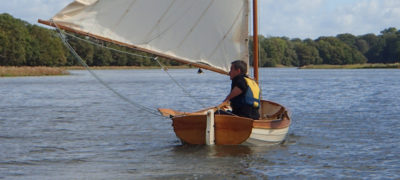
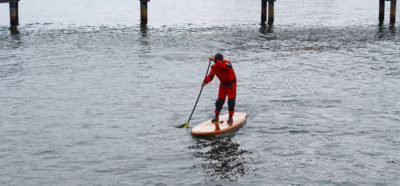


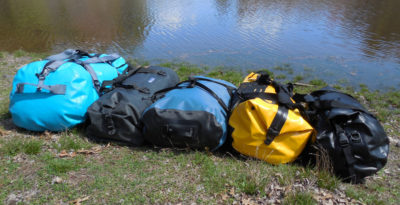

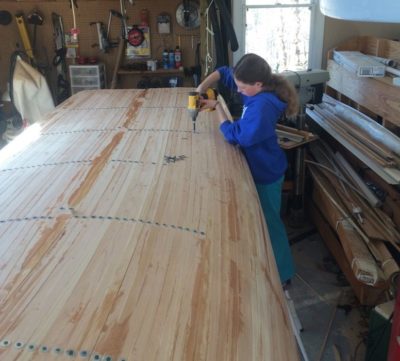
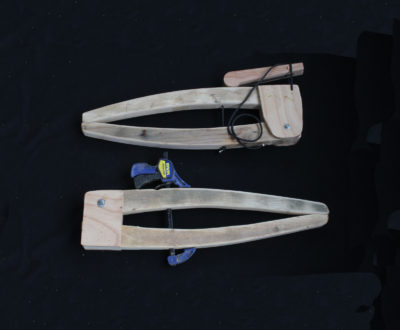
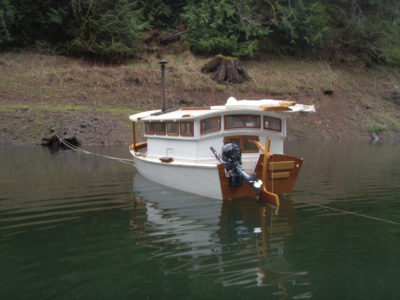
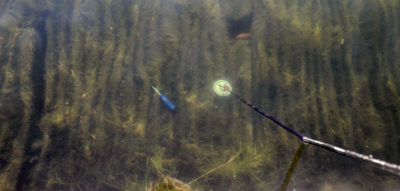

Another advantage of water ballast is that, in case of a swamping, it provides neutral buoyancy. With stones, sand, or shot, there is the possibility of sinking. Water ballast won’t sink your boat, provided you have some sort of positive buoyancy such as floaty hull material, air chambers, or foam blocks.
My wife calls me “movable ballast.” Thanks for the info.
We use the Herreshoff rowboat for commuting to and from Dangar Island, Sydney, Australia. The original design has no skeg or fin. It was OK rowing but when coasting the boat would yaw annoyingly. Consequently I now always fit a sturdy stainless-steel fin and the boat tracks nicely but is still able to maneuver nicely. The draft is now about 6″, not too bad for most rowing. Of course if the bow is trimmed down it tracks poorly and if it is trimmed down at the stern it does not row as easily.
Another solution afforded in my Whitehall is its two rowing stations. The primary thwart (slightly aft of center) is good for most conditions up or downwind until the breeze freshens up to about 8 knots. If I need to row upwind at that point, I’ll shift to the forward thwart to raise the stern–which allows it to track easily directly upwind. The bottom line: I plan my daily hour-or-so outing around the predicted wind direction, always start off rowing upwind in the forward thwart, then shift to the primary thwart for returning home with the wind. I avoid as much as possible rowing cross wind when alone in the boat.
Thanks, Ben Fuller. Your article may help me in one of my kayaks that lacks a retractable skeg. I will experiment with loading the stern more.
My lead shot ballast bags were old coin bags that I got from my mother in law, a cashier. After a bunch of years they needed replacement, rot was the culprit. So I went on line and found some new nice simple canvas bags and can retire the coin bags. I’ll probably pick up some more shot as they came in packs of three. As compact as they are they’ve fit under floorboards of many traditional sailboats.
I use sandbags designed for anchoring soccer goals (easily found on Amazon). The good bags have handles, are lined (so they don’t “leak” sand), and the zippers can be zip tied. I carry six in my Devlin sailing dory (18′). They carry 45 pounds each and the handles make them easy to move around when I’m underway. If I’m sailing with another person, or the wind is light, I’ll take one or two out and leave them in the truck. The bags are sturdy (heavy duty polyester) and the thing I like about sand bags is that I can walk on them, so there is no tripping or stepping over them if I need to move forward to a rowing station or to the mast to brail the main sail.